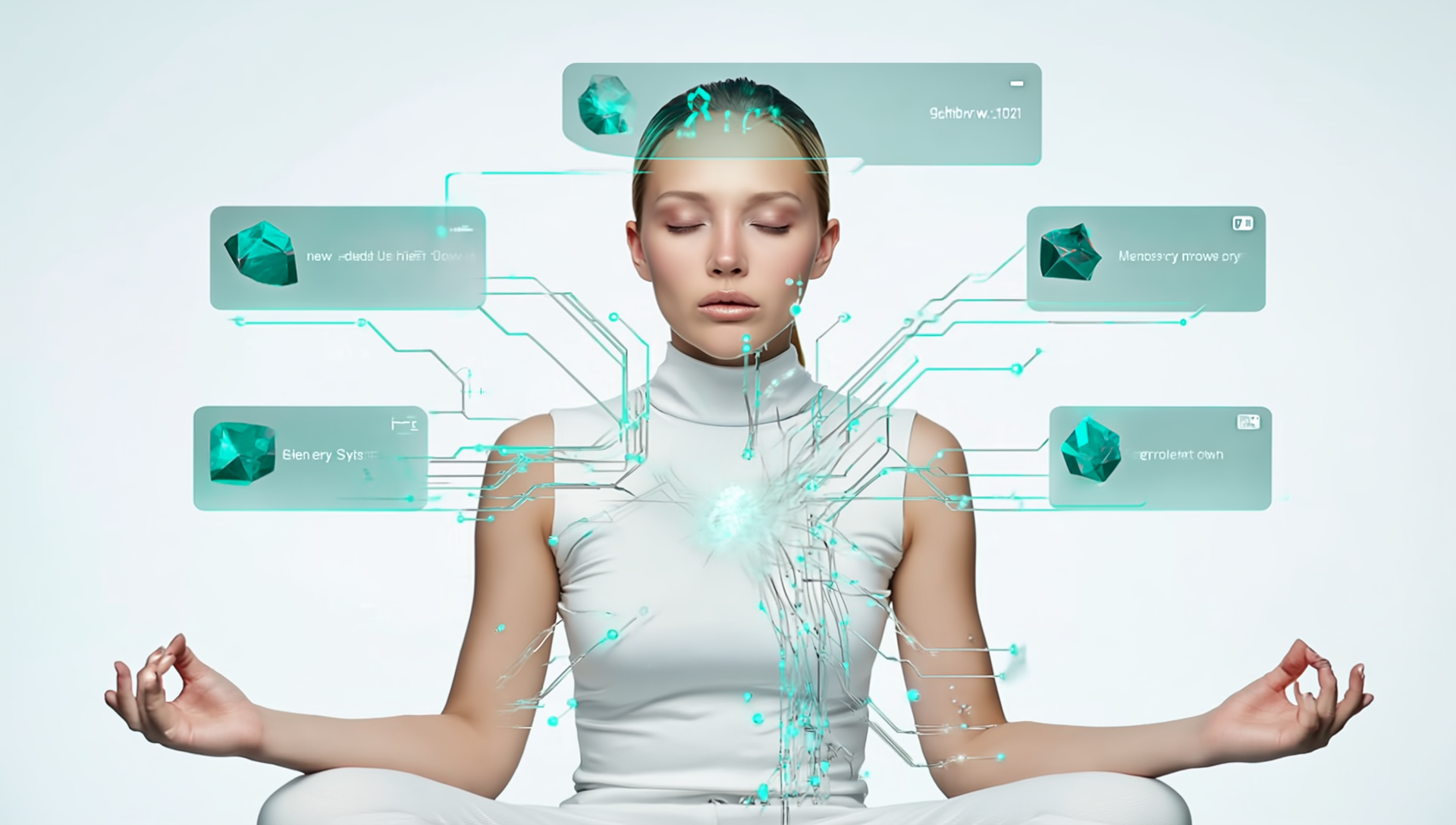The Background Apps of Emotion
A Cognitive Allegory for the ExNTER Emotional Reintegration Process
By Irina Fain (https://www.linkedin.com/in/irina-fain-a44774388)
Published on ExNTER (https://exnter.com)
⸻
- The iPhone Analogy — A Modern Mirror of the Mind
Every mind is a device — beautifully engineered, infinitely adaptive, and constantly online.
But like your iPhone, it runs more than you think.
Even when you close an app, it doesn’t always stop working. It stays open in the background, quietly refreshing data, tracking location, draining power.
The human brain behaves the same way with unprocessed emotional experiences.
Each unresolved moment — a humiliation, a shock, a disappointment, or a silence — becomes an open program.
The conscious mind swipes it away and moves on, but the emotional subroutines keep running.
They update memory files, send alerts to the body, and consume the battery of your internal system — attention, mood, and physiological regulation.
Over time, too many open loops create lag.
You forget why you feel tired, reactive, or foggy. You think you’re “over it,” but the app is still running, quietly downloading from your subconscious cloud.
The Emotional Reintegration Protocol (https://exnter.com/emotional-reintegration-protocol/) functions as a system manager — a structured way to identify, open, and properly close those hidden processes.
Not by deleting data, but by completing it.
⸻
- Why It Works — The Neuroscience of Completion
The brain’s memory system is predictive, not archival.
When an event is too intense, the hippocampus fails to encode it as finished.
The amygdala keeps sending open threat signals — even decades later — because it believes the sequence never reached resolution.
That’s why certain sounds, faces, or phrases re-trigger emotion long after the logical mind has moved on.
The Reintegration sequence reintroduces predictive closure.
By calmly revisiting the memory through sensory detail — sight, sound, temperature, texture — you reactivate the neural network that stores it.
Then, through gentle repetition and observation, you signal to the system: The event is over. Data complete.
The charge drains; the brain re-indexes the file under “neutral.”
In NLP terms, it’s a state re-coding — shifting a memory from “live” to “archived.”
In hypnotic terms, it’s closing an unfinished trance loop.
In simple language: you stop replaying what your brain still believes is happening.
⸻
- The Parallel Model — Emotional RAM vs. Storage
Think of emotional memory like computer RAM.
RAM is temporary, fast, and easily overloaded.
Storage — the hard drive — is long-term, stable, low-energy.
When emotional memories remain “charged,” they stay in RAM, consuming active processing power.
When they’re reintegrated, they move to long-term storage — accessible but not draining.
That’s why, after a Reintegration Session, people often say:
“It feels distant now, like a movie I once saw.”
This is the exact marker of completion: distance without detachment.
You remember, but it no longer owns your state.
⸻
- The Architecture of Emotional Power
A traumatic memory loses power not by erasure but through completion.
What gives emotion force is not the event itself, but the energy trapped in incompletion — the nervous system’s unresolved “What should have happened but didn’t.”
Reintegration lets that energy fulfill its arc.
Once the loop closes, the stored charge returns as usable energy.
In neurological terms:
what was once épuisant (exhausting, depleting) becomes cohérent (usable, integrated).
It’s emotional recycling — turning resistance into resource.
⸻
- The Work or the Session
Anyone can begin with the self-directed Reintegration Practice — a structured series of sensory and reflective questions that safely process mild to moderate emotional residue.
But for deeper or multi-layered experiences, guided facilitation amplifies precision.
A trained practitioner holds timing, pacing, and somatic calibration while the system resolves deeper files.
That’s why ExNTER offers Reintegration Sessions — one-on-one immersive experiences where awareness acts as the mirror and the nervous system does its own engineering.
Each session closes multiple “background apps.”
The results are measurable:
• lighter body
• clearer thinking
• reduced inner noise
• restored presence and focus
⸻
- The Logic of Wholeness
This isn’t therapy — it’s cognitive hygiene.
A maintenance protocol for consciousness itself.
When the apps of emotion stop running in the background, your system stops confusing old alerts for current data.
That’s when clarity, attention, and energy return effortlessly.
You become fully present — not by effort, but by architecture.
⸻
- The Definition
ExNTER Emotional Reintegration
A structured process of sensory and cognitive completion designed to neutralize the emotional charge of unresolved memory, returning system energy to conscious control.
⸻
🜂 In Closing
The brain doesn’t seek happiness — it seeks completion.
Once the loop finishes, peace happens on its own.
When the emotional operating system is reintegrated, consciousness runs clean.
© 2025 ExNTER (https://exnter.com) | The Laboratory for the Mind in Motion
#IrinaFain #digest #reflections #science #psychology #awareness #emotionalreintegration #ExNTER











